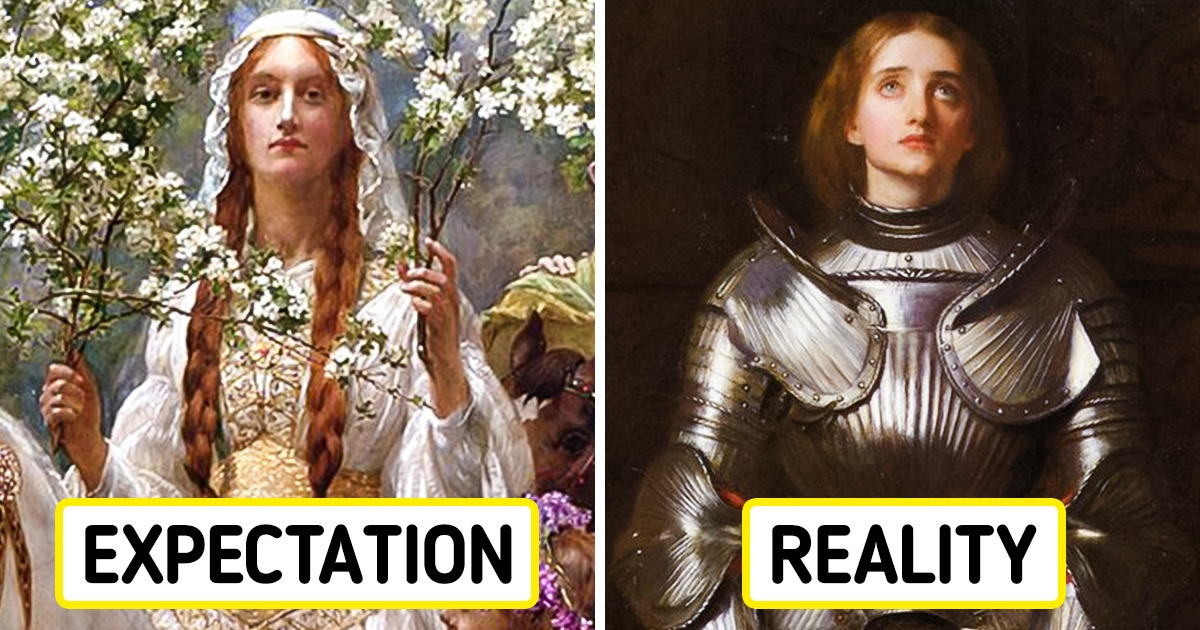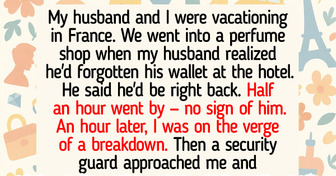15 Tweets Showing Married People Have Their Own Way of Keeping Life Amusing


We are used to considering knights to be noble warriors, true examples of honor and courage, while gorgeous ladies are normally perceived by us as fragile and tender creatures who need protection and rescue. It seems that, at those times, men were always ready to sacrifice themselves for a noble goal, while women were patiently waiting behind high castle walls. But are the movies that praise the dignity of medieval heroes that true after all?
The sublime relationship between knights and the ladies of their hearts did exist in the Middle Ages. But historians find it difficult to say for sure whether the people of that era took these relationships seriously or whether it was just a court game.
Poetic works, which glorified bright feelings, had great success among noble gentlemen, especially at the court of Eleanor of Aquitaine. But it still remains unknown whether aristocrats were trying to bring these fictional relationships into their lives.
Not every warrior who showed courage on the battlefield could become a knight. First of all, a young man had to go through arduous training.
Future knights started their training at the age of 7 and boys usually came from aristocratic families. At first, they performed the duties of pages, and from the age of 14, they became squires. The ceremony of being made a knight was held between the ages of 18 and 21.
Still, noble birth and being highly skilled were not enough to become a knight. The young man had to have the funds to buy armor and a horse. If there was no money, he would have to continue his career in another sphere.
Of course, beautiful ladies wouldn’t appear on the field for tournaments with a spear hanging over their shoulder, however, their role in tournaments was not limited to just choosing the knight that their heart liked. Oftentimes, noblewomen would organize and sponsor these tournaments. Also, they could add additional points to the warriors they liked.
There were cases when a lady’s honor was defended in a duel. But they were more the exception rather than the rule. It was preferred to solve debatable moments in the court, not with the help of swords. The thing is the outcome of a battle was not enough to close a case and the result could still be disputed later.
Sometimes women were left to manage and run their property, especially in the case of widows. Many widows were expected to take over their late husbands’ businesses, meaning women could be seen working as smiths or ironmongers. In this case, ladies were in charge of defending their homes and land. They could fight off an attack from an enemy army, stave off robbers, or handle an invasion of landless knights. And though women were not given knight titles, they could often fight as well as men.
Some think that the modern army salute originated in the Middle Ages. In order to show their good intentions, knights had to lift their visors with their right hand. This way, they were, first of all, showing that they weren’t holding a sword, and second, they were showing their face. This version is quite romantic but not very plausible. It’s more likely that the tradition of saluting appeared later in the seventeenth and eighteenth centuries when helmets, both with and without visors, were no longer being used in the army.
The image of a knight rescuing a beautiful woman who ended up in a complicated situation has been ingrained in people’s minds. In fact, though respect to noblewomen was written in the code of knightly honor, warriors themselves did not always behave properly with the ladies. They might kidnap and even lock up their potential wives. Finding a way out of these situations was oftentimes a woman’s task.
It’s in modern armies that everyone is wearing the same uniform. In medieval times, knights donned bright but varied outfits. Most of the armor was custom forged and each piece was different from the other.
In everyday life, noble warriors opted for bright and saturated colors like blue, scarlet, and black. This was one way for them to demonstrate their wealth.
First of all, knights were professional warriors who made a living with the help of their swords. During wartime, the sovereign could provide his vassals with both employment and money. However, in peaceful times, bored knights could ruin a peasant settlement and even attack a clergy in order to get some money or just to have some fun.
In order to somehow tame the young and zealous fighters, a special code of honor was created. When it was clear that the code didn’t help much in solving the issue and the knights’ behavior didn’t change, they started to publish educational literature like novels and poems praising nobility.
On the battlefield, knights often sought to keep other warriors alive. This was not due to some kind of noble motivation but because, in reality, a living noble enemy was much more valuable prey. Not only was it possible to take all his armor and horses but also to ask for a reward for the warrior. Therefore, capturing knights in the midst of a battle was quite a profitable business.
In movies, we often see knights riding big mighty horses. In fact, the warhorses were short and agile horses who could deftly maneuver during battles.
More massive horses were used for agricultural work and the transportation of various pieces of luggage. A noble warrior would never have ridden this kind of horse.
Here’s another common movie scene that we often see: a battle is in full swing and a brave knight is moving through enemy troops, easily cutting the armor of his foes with a sword. This gave rise to the myth that armor could be easily cut with a sword or even pierced with an arrow.
In fact, plate armor protected warriors from sharp blades really well. That’s the reason why many knights would try to get it. The forged bibs that they wore deflected arrows perfectly. That’s why swords, axes, and war hammers were used in battle. These weapons could knock an enemy off of his horse and knock him out as well.
Knights wearing armor would move quite freely — they could get on a horse without any help and even get back up from the ground or dodge a blow. One warrior became famous for being able to climb the underside of a ladder using only his hands.
William Thatcher’s main character in the movie A Knight’s Tale had a real prototype. His name was Ulrich von Liechtenstein, whose name was given to the main character as well. He once appeared at a tournament wearing a lady’s dress at the request of the lady in his life. She felt he needed to do this to show his bright feelings for her. The outfit he wore personified Venus, the goddess of love.
Ulrich’s darling was not a tender, shy creature. She kept brutally rejecting him just because he got embarrassed when meeting her. One time she even mercilessly threw the poor man into a ditch.
Who do you think is a better example of chivalry: modern warriors or medieval knights?











